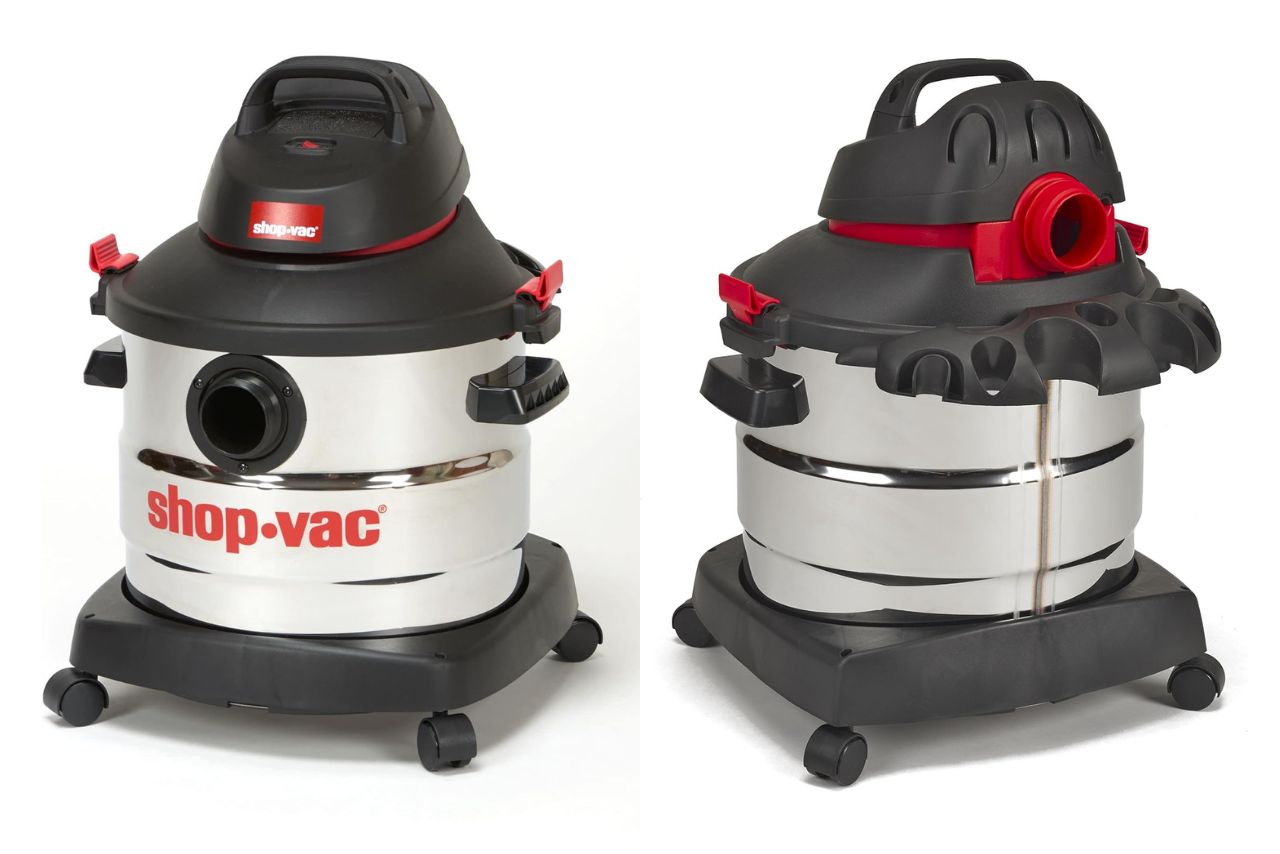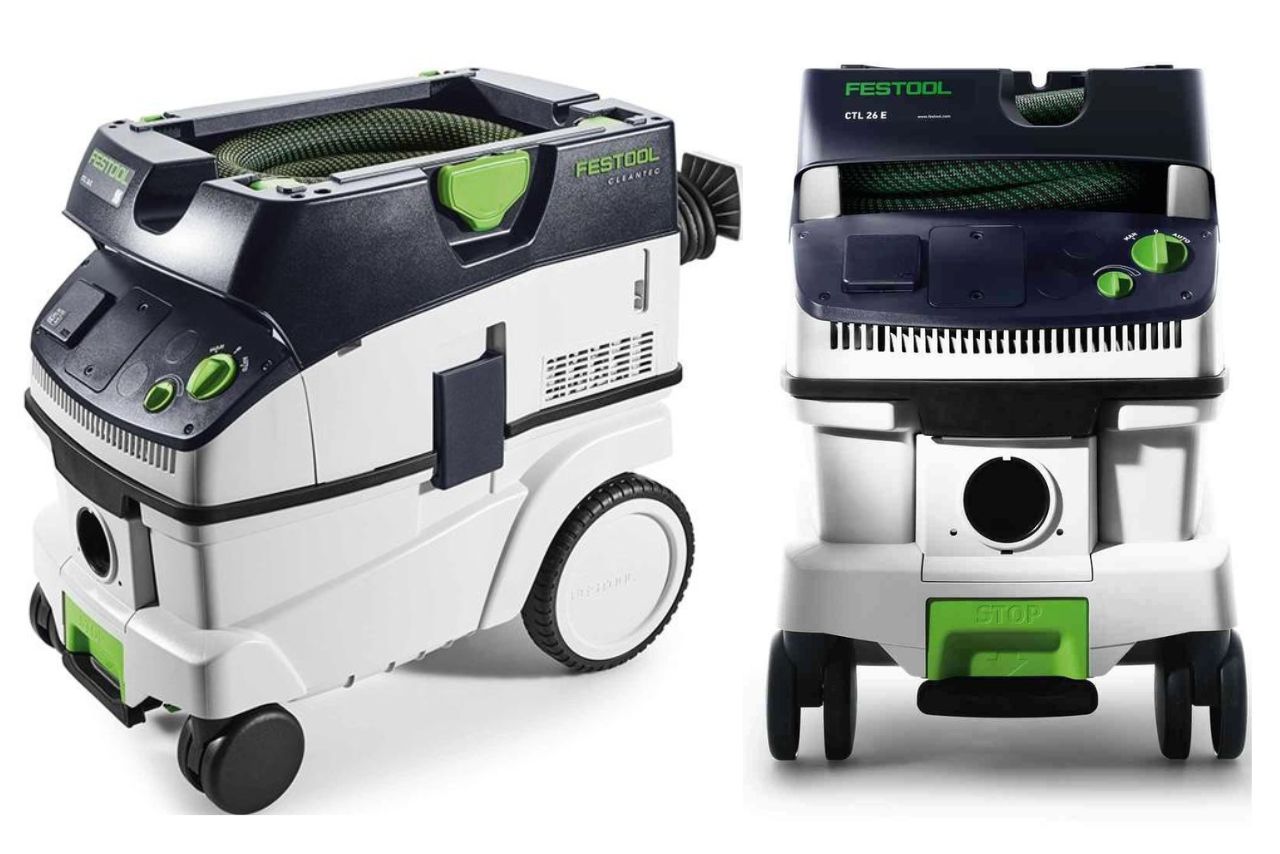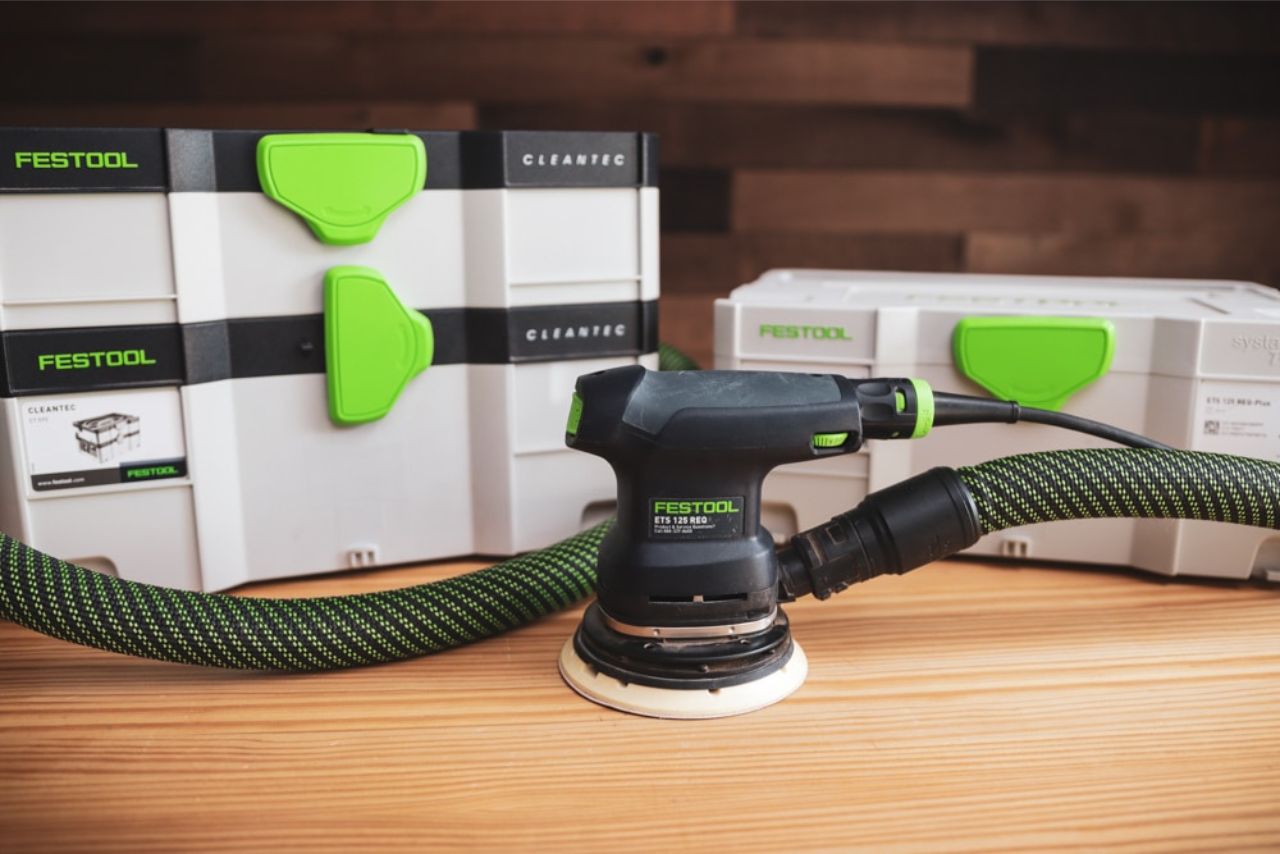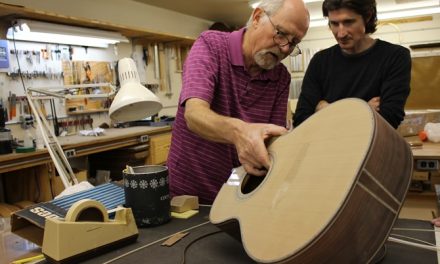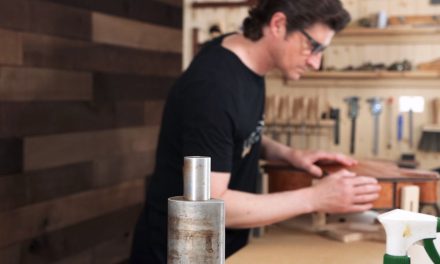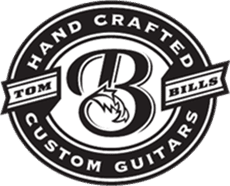
Today, I’m going to talk some common questions about a confusing but very important tool debate: dust extractor vs shop vac:
- Why is this so important?
- Is there even a difference?
- Which is the best for luthiers?
Understanding the subtle differences between these two types of tools can be confusing. But I can tell you from experience that the right dust management tool can:
- Revolutionize the way you work
- Keep your workspace pristine
- Help to extend your life
That’s exactly what it did for me when I finally got serious about finding the perfect tools to make my workshop as dust-free as possible.
It all starts with understanding why managing and removing dust is from our workspace is so important.
The Dangers Of Fine Dust
I feel blessed every day to have a clean and (nearly) dust-free workspace to enjoy as I build my guitars, complete with:
- Dust collection
- Dust extraction
- And most importantly – Clean & healthy air
However, it wasn’t always that way…
When I started building guitars professionally in my early twenties, I was completely unaware of the dangers of fine dust.
At one point, I decided to leave all the wood shavings and dust on the ground in my shop until they became a thick, soft layer to stand on. I’m embarrassed to admit that I thought I was pretty clever with this hair-brained idea, but not for long…
After a few weeks, I started coughing, and it didn’t go away.
I learned that whatever dust was on the ground got kicked up into the air and into my lungs with every step.
As the weeks went on and my cough persisted, I knew it was time to clean things up and get serious about protecting my lungs.
Looking back, I’m glad I tried that ridiculous experiment. It motivated me to start researching the dangers of wood dust for woodworkers, and the data I found was shocking.
One study from Cyclone and Dust Collection Research found that:
- “Most small shop workers get more fine dust exposure in a few hours woodworking than large facility workers get in months of full-time work and we frequently work more toxic woods, so have higher more dangerous toxic chemical exposures.”
- Woodworkers “lose about 1% of their respiratory capacity per year of work, and woodworkers have shorter life spans.”
(You can read more about my reaction to that study and the initial actions I took regarding my dust collector setup in my Ultimate Guide to Dust Collectors.)
This is scary stuff, but the good news is that it doesn’t have to be that way,
IF we take the proper precautions.
Two Keys to Cleaner Air While Woodworking
I discovered that in a small guitar-building shop like mine, the key to maintaining healthy air depends on two main things:
1 – Capture as much fine dust as possible
Fine dust particles are the most dangerous because they are small enough to enter your lungs. Because they are so small, most vacuums don’t filter them out. After passing through the vacuum, they get recirculated back into the air.
2 – Capture that fine dust at the source
Collecting the ultra-fine dust before it can get into the air is the best way to protect yourself and keep the air and your shop clean. Once airborne, it can float around for days, ending up in your finishes or, worse, in your lungs.
Armed with this information, I was equipped to analyze and choose which tool would best accomplish those two main goals, ultimately improving my health and maybe even extending my life.
Dust Extractor Vs Shop Vac – Is there a difference?

Dust collectors are the best for capturing dust at the source for large stationary tools (like drum sanders, belt sanders, etc.). I covered this in my Ultimate Guide To Dust Collectors, which chronicles that part of my dust management journey.
(By the way, I still use the Oneida Supercell I raved about in this video, and it’s still amazing.)
But, the problem was that in my guitar-building shop, the majority of that dangerously fine, inhalable dust still came from my random orbital sander and similar tools.
To capture that fine dust at the source, I needed something else.
I began researching two options:
- A shop vac-style vacuum
- A dust extractor
Though not apparent at first glance, there are actually quite a few impotent differences between them.
Let’s look at some of their key features to better understand their strengths and weaknesses.
Shop Vacs
A Shop Vac is great for general cleanup and collecting large wood chips. Its design allows for quick and efficient debris removal. Many Shop Vacs can also be used to vacuum up water, which is great but not very useful for guitar making. But most don’t filter that inhalable fine dust, which is so dangerous.
Key Features
- Versatility – Suitable for wet and dry cleaning.
- High Suction Power – Handles large debris and heavy dust.
- Portability – Lightweight and easy to maneuver.
- Affordability – More affordable compared to dust extractors. Shop Vacs can cost about 1/3 less than a dust extractor.
Comparing The Shop Vac & The Dust Extractor
Next, we can examine some key areas affecting most woodworkers and guitar makers to see which type of vacuum is the best for this work.
Filtration Efficiency
Dust extractors lead with their HEPA-certified design and filters, capturing fine dust with remarkable efficiency, unlike the standard filters found in shop vacs.
Suction Power
Shop vacs boast high suction power for handling large debris, but they lose power quickly as they become clogged. Dust extractors are optimized for fine dust removal and constant power without getting clogged or bogged down.
Noise Levels
Dust extractors operate noticeably quieter than shop vacs, which can be very loud, especially the more powerful models.
Tool Integration
Festool dust extractors are the leader in this category, with an arsenal of professional-grade sanders and other tools built for maximum dust collection at the source.
Price
Dust extractors might be better in just about every category, but the price is where the shop vac shines. Dust extractors are far more expensive than shop vacs.
Dust Extractors
Dust extractors aren’t just about collecting dust and debris; they’re about creating a healthier environment. With a specialized design, high static pressure, and consistent suction, these units efficiently capture fine dust at the source. They are also HEPA-rated to remove that fine dust and to ensure your shop’s air stays as clean as possible.
Key Features
- HEPA Filter & Bag – Captures particles as small as 0.3 microns.
- Variable Speed Control – Customizable based on the task at hand.
- Automatic Start/Stop – Integrates with power tools for seamless operation.
- Quiet Operation – Extremely quiet even when used for extended periods.
- Superior Durability – Professional quality build, switches, ports, etc.
- Blue Tooth Control – Optional wireless control.
- Native Tool Integration – Designed to plug into tools like sanders for optimal collection at the source
Consistent Suction Power For Extended Use – Superior design to maintain airflow and suction regardless of how full the bag gets.
What I Use (& A Few Recommendations)
I’m biased in this department because I love my Festool tools. I have used my Festool Dust extractor multiple times daily for years, and it’s a true joy to work with.
I love how it integrates with my Festool sander. It’s so easy to connect, and the suction through the sanding pad is so strong that I never even see the dust on the wood surface or in the air while I’m sanding. (I’m planning to invest in a larger Festool dust extractor (the CT 26 model) and some other tools from that system soon, too).
I also have a small shop vac (shown in the photo near the beginning of this email) that I use for vacuuming in my garage, small home improvement projects, or anything else that I don’t want to use my fancy Festool for.
It works okay for those applications, but it’s pretty loud and doesn’t capture that fine dust that gets all over everything.
That being said, choosing a dust extractor or shop vac is a matter of personal preference, with specific use cases and requirements, or simply finding a solution that works with other components of your current tools and systems.
So, here are a few of the current top dust extractors and shop vacs to start exploring if you’re considering an upgrade:
Top Dust Extractors
- Festool CT 26 E (next on my wishlist)
- Fein 92035236090 TURBO I
- DeWalt DWV012
- Bosch VAC090AH
Top Shop Vacs
(If you know of other solutions that I should include in this list, let me know so I can add them when this is published on my blog.)
Budget Friendly Shop Vac Upgrades
I’m sure it’s obvious by now that I recommend investing in a dust extractor and the tools built to work with it.
Still, I realize that dust extractors like Festool are crazy expensive and might only be affordable to professionals who do this work for a living and can afford them as a business expense.
Remember, I couldn’t afford this fancy stuff for many years either, so if you’re not ready for that yet, here are a couple of tips to help you get almost as good of a vacuum for a whole lot cheaper.
To upgrade your shop vac, you can add the following components to a few key areas.
HEPA Filtration
In order for this to actually be HEPA-level filtration, you’ll need a new HEPA filter AND a new HEPA filter bag. Together, they should do a far better job removing finer dust particles.
Noise Level
You can also use a noise suppressor like this to quiet down the shop vacuum a bit without sacrificing too much suction power.
Hose Quality
There are quite a few hose upgrades on Amazon, such as these, that can make your shop vac feel a lot more like a higher-end dust extractor. Many are non-static and much more convenient to manage and use.
Cyclone Separator
Because a Shop Vac is not designed to be used with HEPA filters and bags, they get clogged constantly. Adding a Cyclone Separator such as the Oneida Dust Deputy will help save you money and time spent messing with and replacing clogged bags and filters.
Important Tips To Consider
The main thing is to capture that fine dust, and those HEPA filters and bags will help with that.
The other upgrades are nice to have, but the more you add, the more bulky and complicated your vacuum gets. That takes up more room and is more challenging to move around.
The biggest downside of this approach is that there aren’t native tool integrations for the shop vac.
So, collecting the dust at the source will need to be hacked together with different fittings and workarounds that can’t produce the same results as a system like the Festool extractors and tools or other similar systems.
Conclusion
We all must do the best we can with what we have at each phase of our guitar-building journey.
If you can afford to invest in a system like the Festool extractor and sander I use, they are fantastic, and you will smile inside every time you use it.
But for all the years before I could get that setup, I had to get creative and look for ways to upgrade what I could or build something to help in those key areas.
I learned a lot in that process, so I’m okay with it.
It’s an essential part of the natural progression of things as we progress, learn, and grow.
The key is to always focus on maintaining a clean and healthy workspace so you can do your best work AND live a long, healthy, and fulfilled life as you craft your beautiful guitars and share your gifts with the world.

